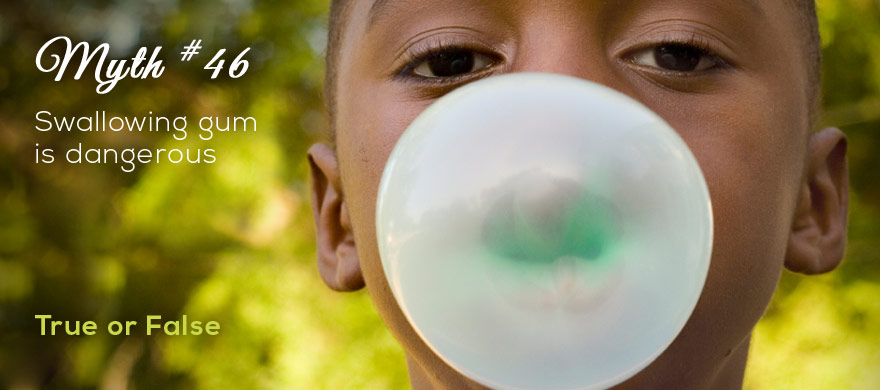
False.
Many were told never to do it but most did it anyway; that is they swallowed a piece of chewing gum. This may be the most perpetuated myth of all time. The parental information that is usually shared with young children to deter them from swallowing gum is that gum is not digestible (which for the most part is true) and remains in the stomach or intestines where it can turn into a huge ball of sticky goo and plug up the digestive system (which for the most part is not true). People have chewed gum type substances, usually resin from trees, for thousands and thousands of years. It wasn’t until the 1840’s that a businessman noticed loggers chewing tree resin and tried to mass produce and market the resin as gum but ultimately couldn’t find adequate supplies of the resin. Then in the 1860’s a Mexican general, with the help of a New York inventor, identified a chewing gum base that became very popular. It is this gum base which makes gum chewy and which is not broken down in the system. Ultimately it passes through the digestive system in about the same amount of time as other ingested materials. It is reported that swallowing gum can result in adverse effects such as diarrhea, gas, and stomach discomfort (Milov, et al. 1998). These authors even reported the cases of three children who had masses of gum removed from their digestive system. However, in one of these reported cases a 1½ year old girl had swallowed a number of coins that were entangled with the gum, and the two other cases were of four year old children who habitually swallowed five or more pieces of gum a day. So even though there are reported cases of masses of gum being removed from the intestinal tract of children, these cases are extremely rare and usually involve large quantities of swallowed gum.
Reference:
Milov, D., Andres, J., Erhart, N., and Bailey, D. Chewing gum bezoars of the gastrointestinal tract. Pediatrics (1998), Vol 102, pp. e22.
